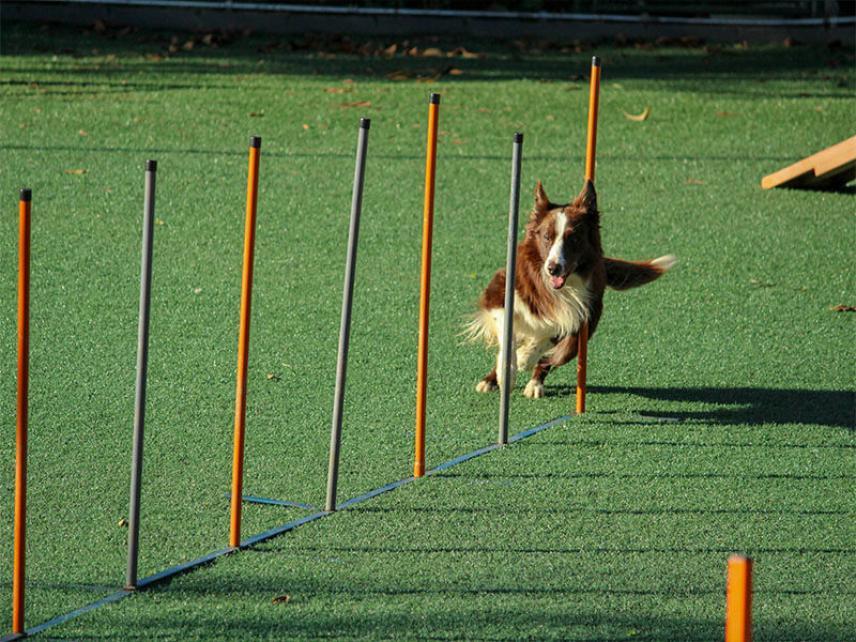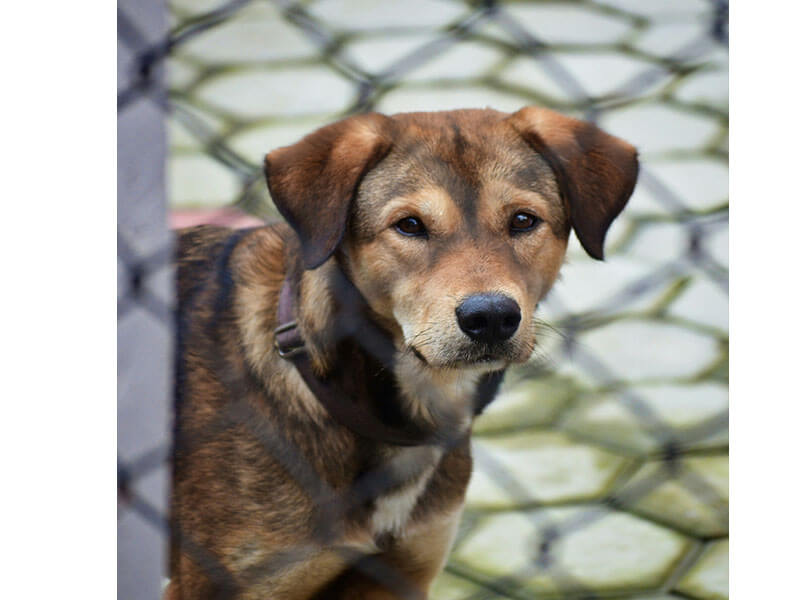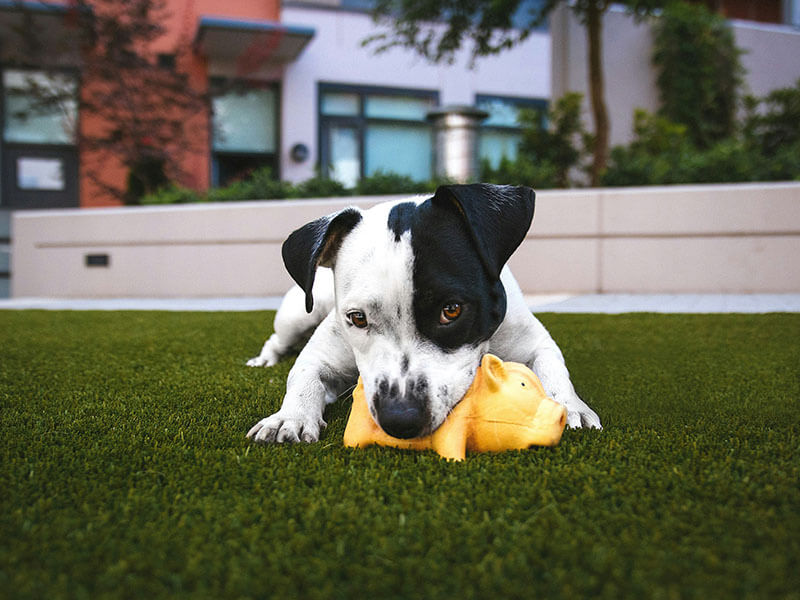The number of registered
animals is growing every day
Published: Oct 7, 2024

Daily walks with your dog don't have to be a boring, routine task! By making them more exciting, such as by taking your pet to a dog run, it can turn into an interesting experience for both the animal and its owner.
A dog run can refer to a properly prepared backyard area for canine fun, as well as a designated, fenced area in an urban environment intended for our four-legged friends. What are the differences between them? How does the dog feel in such a place, and is it completely safe?

A dog run in a backyard garden allows the dog to explore familiar space – its own territory. Dogs can freely play, run, dig holes, thus taking care of their well-being and burning off excess energy.
A dog in such a place is at home, which is especially good for animals with unruly personalities, strong instincts, or territorial tendencies, who do not necessarily respond to recall commands. A backyard dog run allows you to forego using a leash and muzzle, which will be comfortable for both you and your pet.
An urban dog play park is a bit more of a challenge. Importantly, it is not a place for every dog. Social dogs, who enjoy being around other dogs, do not react aggressively, or those with a more submissive nature who spend most of the time near their owner, avoiding contact with other dogs, feel best in such places. Stress and behavioral problems can lead to aggressive or anxious behavior in the animal.
Is every home garden or yard an appropriate place for a dog? Unfortunately not. Depending on the space you have available, you can opt for a smaller or larger dog run enclosure.
With this solution, the dog can spend time outdoors, play, run, and observe its surroundings. However, it is important to ensure that the size of the run matches the dog's individual needs. Some breeds can relax calmly throughout the day, while others need much more exercise, including long walks that can last several kilometers.
A dog run enclosure can never fully replace the interaction between dog and owner, which is why keeping a dog locked in an enclosure all day is not responsible behavior.
Taking your dog to a city dog run? Great! Provided that you can discipline your dog, have socialized them from puppyhood, and they are friendly, conflict-avoiding animals.
Keep in mind that a dog visiting an urban dog play park may react in various ways, and the dynamics of its behavior will depend on the surroundings and the other dogs sharing the limited space.

Be sure to read the rules before entering a public dog run!
Scents can cause excitement, aggression, or fear in dogs – their emotional response will depend on whether your dog feels comfortable in the company of other dogs. In a limited space, they cannot move away to a safe distance.
The numerous emotions experienced by a group of dogs can change quickly and unpredictably, escalating into conflicts between dogs.
The limited space means that dogs cannot maintain the proper distance from each other, which can force them into defensive, aggressive behaviors. An urban dog run is not a place where you can leave your dog to their own devices and focus on something else. Always keep an eye on your dog and watch whether they feel comfortable and whether this place is really suitable for them!
Both home and city dog runs should have solid fencing. Poor fencing can lead to the dog escaping – not only through gaps in the structure but also by digging under it. Some dogs are prone to jumping or climbing fences. This behavior may be triggered by other animals, including wild ones, or by heavy traffic nearby.

What are the risks of poor fencing?
Injuries, accidents, and even the dog’s escape. This can happen even under careful supervision. Registering your dog in the Global Animal Database is an option every dog owner should consider.
Electronic tagging is completely safe and allows for effective identification of your dog and finding its owner in the Animal Registry.
If your dog escapes from the run, the chip will allow identification, and the person who finds your lost pet will be able to enter the identification number into the WORLDPETNET search engine and contact you.
Building a dog run in your own garden requires a considerable investment and budget. The main costs will include:
An urban dog run is usually free, but the infrastructure may be poor, worn out, and therefore unsafe. This includes poor fencing, overgrown vegetation that can be toxic to animals if eaten, and discarded items and trash left by other dog owners, as well as damaged obstacles and toys.
As you can see, each option has its pros and cons. Remember to prioritize your pet’s well-being, comfort, and safety when making your decision! Otherwise, the bond between you and your dog may weaken.
A home dog run is a designated area in your backyard where your dog can play and exercise freely within familiar surroundings. This setup is ideal for dogs with strong territorial instincts or those that may not respond well to recall commands. In contrast, an urban dog park is a public, fenced area where dogs can interact with other dogs. Such environments are best suited for well-socialized dogs that enjoy the company of others and can handle the dynamic nature of group play.
Dogs with high energy levels or specific exercise requirements may benefit from the space and freedom of a home dog run, provided it's adequately sized and secure. However, it's essential to remember that a home run cannot replace the need for regular walks and interaction with the owner. On the other hand, social dogs that thrive on interaction with other canines may find urban dog parks stimulating and enjoyable. Owners should assess their dog's behavior and comfort level in such settings to ensure a positive experience.
Whether at home or in an urban setting, ensuring the dog run is securely fenced is crucial to prevent escapes. Owners should be vigilant for potential hazards, such as gaps in the fence or objects that could cause injury. In public dog parks, it's important to monitor your dog's interactions with others to prevent conflicts. Additionally, registering your dog in a global animal database can aid in identification and recovery if your dog were to get lost.



Marking animals with a microchip is the most durable, effective and completely safe method of quick and reliable identification. Every transponder (chip) has a unique number which enables instant identification of the animal and its owner, helping them reunite faster. However, it is important to remember that a chip is just a transponder with an encoded number. It is not a tracking device and contains no data about the animal or the owner! Therefore, in order to identify a chipped dog or cat, it is necessary that a microchip be registered in a national marked animal database...
Read moreIn today's world, responsibility for animal care has become not only a priority for their owners but also a societal issue. One of the most important tools in ensuring animal safety is the chip database. It allows for the quick and efficient recovery of lost pets, which is crucial for protecting their health and well-being.
The introduction of microchipping has significantly improved the effectiveness of efforts to locate lost animals, reducing stress for both owners and their four-legged friends. Registration in the chip database is increasingly required by local regulations, further highlighting the importance of this technology in ensuring comprehensive care for animals.